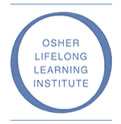|
Creating Aging-Friendly Communities
|
|
  |
Why our Communities Must Become More Aging-Friendly Andrew Scharlach, Ph.D. Dr. Andrew Scharlach describes the demographic changes facing America's cities and towns, and the critical importance of local efforts to meet the needs of an aging population. In addition, Dr. Scharlach outlines a vision for aging-friendly communities, and indicates how participation in this online conference can assist communities to take concrete steps towards fulfillment of this vision. |
Welcome:
  |
Importance of Partnerships in Creating Aging-Friendly Communities The Honorable Josefina G. Carbonell The Honorable Josefina Carbonell highlights the strategic vision she has brought to AoA that centers upon improving the capacity of the community-based Aging Network to help older adults live and age with the highest quality of life possible in their communities. Her presentation addresses communities' role in increasing the health and vitality of America's elders by improving access to quality care, emphasizing prevention for improved longevity and fostering consumer choice. |
Panel:
 |
A Vision for Livable Communities for Older Adults Elinor Ginzler Ms. Elinor Ginzler describes AARP's comprehensive efforts to promote livable communities for all ages. In particular, she discusses the characteristics of livable communities and the adequacy of communities to serve the needs of older persons, based on AARP's groundbreaking report, Beyond 50.05óLivable Communities: Creating Environments for Successful Aging. She also describes AARP's 10-point community self-assessment check-list, which can be used as a report card and guide to evaluate and assess the livability of a community, as well as AARP's other efforts to promote aging-friendly communities. |
|
|
Characteristics of Aging-Friendly Communities Mia Oberlink Ms. Mia Oberlink identifies the critical characteristics of an aging-friendly community, based on her work with the AdvantAge Initiative. In particular, she identifies three domains and 33 specific indicators of aging-friendliness, and provide examples of strategies that communities can use to sustain older residents' independence and allow them to age in place. |
 |
Intergenerational Perspectives on Creating Aging-Friendly Communities Nancy Henkin, Ph.D. Dr. Nancy Henkin presents Communities for All Ages, an approach to community planning that takes into account the entire lifespan perspective ó the well-being of children, youth, adults and elders ó viewing neighborhoods and communities as a whole, rather than focusing on the needs of one particular age group. Dr. Henkin reviews how this approach allows people at different life stages greater opportunities to understand, learn from, help and enjoy each other, intentionally embracing the strengths, meeting the needs and enhancing the lives of people of all ages. She also shares how this approach is a viable way to help communities and policymakers see where the interests and priorities of different age groups intersect, and use these zones of opportunity to build an intentional network of mutually beneficial relationships. |
Presentations:
  |
Housing Options in an Aging-Friendly Community Jon Pynoos Ph.D. Dr. Jon Pynoos describes the characteristics of aging-friendly housing, including principles of universal design and visitability. In addition, Dr. Pynoos provides examples of potential solutions to creating aging-friendly housing, and the benefits such solutions can contribute to individual and societal well-being. Finally, Dr. Pynoos outlines specific actions that communities can take to foster greater aging-friendliness in housing and provide specific examples of successful initiatives for creating more aging-friendly housing. |
 |
Work and Service Opportunities in an Aging-Friendly Community Phyllis Segal Ms. Phyllis Segal discusses the emergence of a new stage of life opening up between the end of midlife and the arrival of true old age in which work that makes a difference is likely to play a central role for many. She draws upon research that shows that employers, service providers and communities are not ready yet to reap this experience dividend. Ms. Segal also points to innovative programs that are creating pathways and meaningful opportunities for an Encore Career that is a hybrid between the seriousness and income of work, and the spirit of service. This Encore Career offers flexibility, makes the best and highest use of education and experience and has a measurable impact in solving long-standing social problems in education, human services, health care and the non-profit sector. |
  |
World Cities and Age-Friendly Communities: Are they Compatible? Victor G. Rodwin, Ph.D. Dr. Victor Rodwin addresses aging-friendliness in the world's major urban centers. Drawing upon information gathered as part of the International Longevity Center's World Cities Project, Dr. Rodwin examines the quality of life of older persons living in cities such as New York City, Paris, London, and Tokyo. In particular, he discusses factors such as labor force participation, social isolation, and the availability of adequate health and long-term-care resources. He concludes by introducing a vulnerability index, which can be used to guide intervention strategies targeted to the unique characteristics of each community and its elderly residents. |
 |
Community-Based Supports in Aging-Friendly Communities Robyn I. Stone, Dr.P.H. Dr. Robyn Stone examines what health and social and supportive services look like in an aging-friendly community, including some specific things that participants can do to foster changes in their communities. |
  |
Lifelong Learning in an Aging-Friendly Community Kali Lightfoot Ms. Kali Lightfoot shares strategies for providing diverse opportunities for people to engage in lifelong learning. She explains the benefits of life-long learning as an important part of an aging-friendly community. Ms. Lightfoot also includes examples of how to create life-long learning programs that include Osher Lifelong Learning Institutes. |
  |
Health Services and Technologies Edward Olson This presentation by Mr. Edward Olson and Mr. Andrew Alden will profile the impact of both changing demographics and perceptions of care services over the next few decades. In particular, the influence of innovative person-based, assistive, and environment-centered technologies will provide the needed support for changes in the planning and delivery of aging services.. |
| Creating Aging-Friendly Communities online conference platform is provided by iCohere, Inc. | |
| Presenters | Funders | Co-sponsors | Contact | Home | back to top |